HUNGARIAN EMBROIDERY
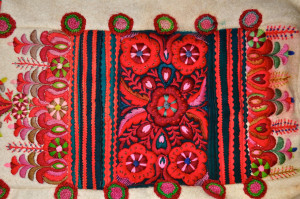
Szűr-Embroidery from Mezőkövesd, from the collection of the AHM
The art of embroidery is thousands of years old. Textiles found in ancient graves were decorated with embroidery. Noblemen of Babylon and Assyria wore embroidered clothing. The drapes in the churches of India and Phoenicia were embroidered. Greeks and Romans liked to wear embroidered clothes. The kurgans of Noin Ula in northern Mongolia and the South Siberian kurgan tombs of Pazyryk revealed beautiful Chinese embroideries and Hun (also considered by some as Scythian) textile and leather appliqué embroideries, to which even present day Hungarian works show much resemblance in technique, color and design. For example the short leather jackets (ködmön) with red leather appliqués which are strikingly similar.
The love for embroidery of the Hungarian people goes far back in history. In Arabian and other foreign chronicles – from times before the Magyars came to the Carpathian Basin – it has been written, that the Hungarians liked to dress in richly decorated and embroidered clothing and their surroundings were pompous. In Hungary there have been weaving and embroidery schools as early as the eleventh century. Embroidery has always been an important part in the upbringing of every girl, whether she lived in the royal palace, or a peasant hut.
1100 years ago – when the last wave of Hungarians entered the Carpathian Basin – there were no great differences in social standards, therefore the embroideries of all classes must have been similar to their designs in metal and stone, which are still witnesses of a brilliant, highly developed artistic style of long ago. Over the centuries the embroideries of the noble ladies became more exquisite, as they could obtain more expensive materials. During the centuries their designs absorbed renaissance and Turkish elements, because the ruling classes were more accepting to the new and foreign fashions. The peasants on the other hand continued to embroider the way their ancestors did for many centuries. Often the motifs of folk art can be traced back to ancient mythology. Therefore it is deep rooted in the soul of the people and any kind of change is hardly noticeable. Even the new designs which peasant girls learned in castles where they used to work, were trans formed to the taste of the people of any given individual area of folklore once they were incorporated into their embroideries. The more affluent locations (villages) display greater similarities to the noble ladies’ embroideries. However there are regions where the embroidery designs had no foreign influence at all.
The oldest existing Hungarian and European! embroidery is the Coronation Robe, made in Veszprém in 1031. The robe was worn by every Hungarian king at his coronation. This piece is the height of artistic and technical perfection and is embroidered with gold thread on pure silk. Originally it was a closed bell-shaped chasuble. The only contemporary picture of our first king, St. István (Stephen), can be seen on it.
Apart from the Coronation Robe there are few old pieces of em broidery in existence. Hungary was a constant battle zone and most of its cultural artifacts were destroyed. The oldest embroidered pieces were preserved by the churches and are from the 15th and 16th centuries. From the same period we have some Hungarian gala dresses which were kept as family heir looms and worn by many generations of men and women. The existing peasant or folk embroideries are from a more recent period. The poor people wore and used the pieces until they were torn and had to be thrown out. The oldest folk embroideries – now kept in museums – are from the 18th century.
There are two groups of Hungarian embroideries, which evolved independently:
a) Men’s embroideries: appliqués, leather and felt embroideries, done by furriers and szűr-tailors, who richly embroidered coats, vests and cloaks (szűr) in their workshops. Weaving developed parallel with embroidery and was also a profession controlled by men exclusively. All these craftsmen were in demand by the royal court, monasteries, courts of pontiffs, the nobility and the general population. They were masters of their trade forming professional guilds in the Middle Ages.
b) Women’s embroideries: all linen and other textile embroideries (thread-counted, free-flowing, surface and cutwork, white and colored embroideries), weaving and spinning done in the home for their own use.
Both types of embroideries are present in Hungary since the time the State was formed 1100 years ago.
Hungarian folk embroidery is a beautiful art, rich in design, color combination and stitches. There are over twenty folkloric regions in Hungary with individual folkart. The availability of textiles and threads influenced the colors, stitches and types of design, which identify the unique folklore of each region. The general characteristics of Hungarian embroideries include proportioned patterns replete with delicately stylized flower motifs, variations of large and small designs, vivid and sometimes contrasting, but always harmonious colors and serve to create a tapestry, which is pleasing to the eye. In Hungarian folk embroidery there is always a balance in coloring and the stitches. With many colors few stitches are used, while monochromatic works have a multitude of stitches.
In the past, Hungarians used embroidery to embellish the clothing of women and men, to decorate the articles of the home, such as pillow and sheet ends, towels, table cloths, wall-hangings and they never forgot the church, which was also decorated with embroideries.
This glorious art is constantly changing and growing depending on the availability of fabrics and threads, talented “writing” women who draw the motifs and the taste of the people. However, the ancient symbolic designs are still present after hundreds of centuries. It is used in different forms today, but still adorns the clothes, homes and surroundings of the Magyar people.
FAMOUS CENTERS OF HUNGARIAN FOLK EMBROIDERY
IN THE CARPATHIAN BASIN
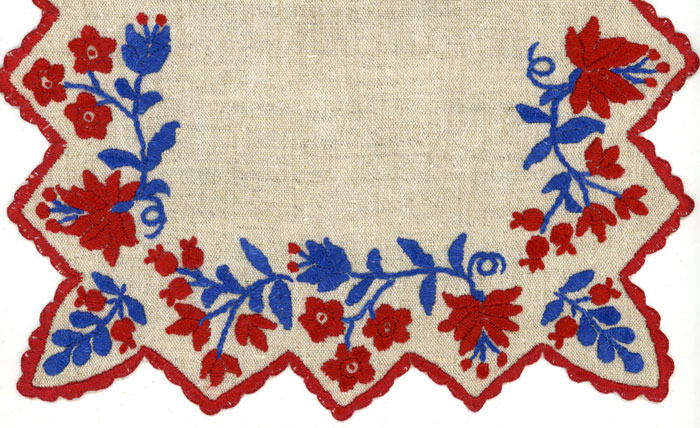
Színes ókalocsai – Old Kalocsa 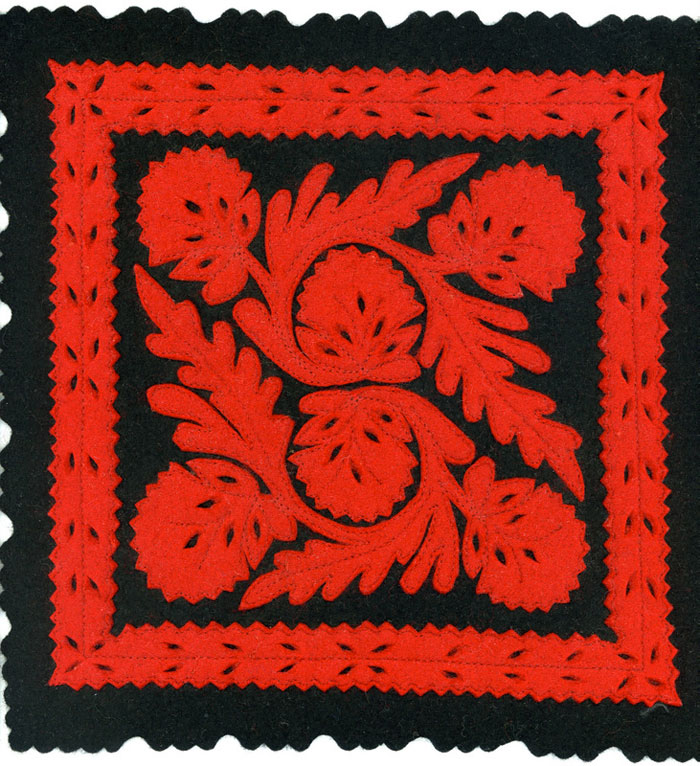
Szürrátét – Szür appliqué 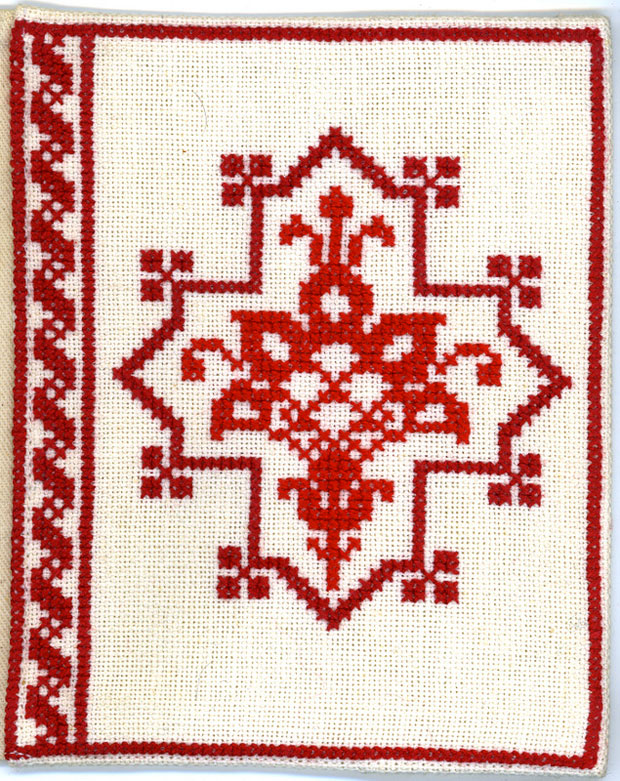
Bereg – keresztszemes – Cross Stitch 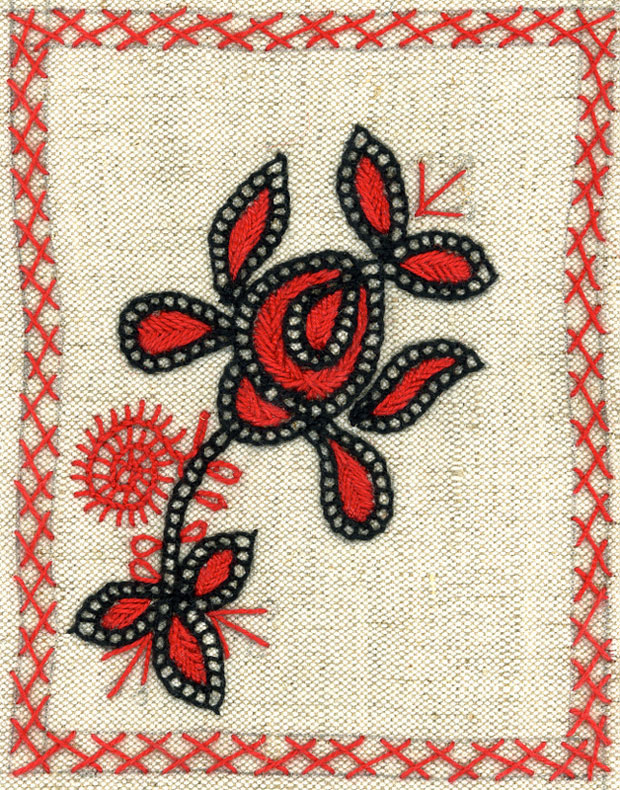
Buzsák – boszorkányos 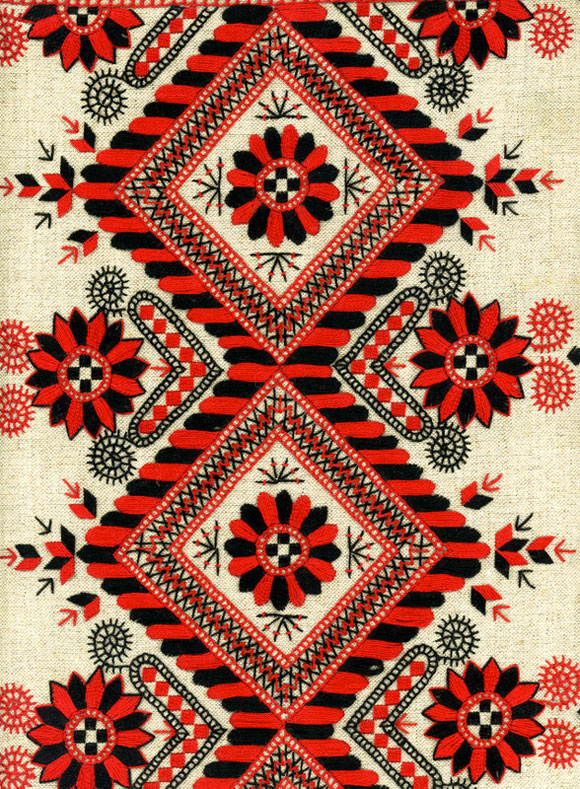
Buzsák 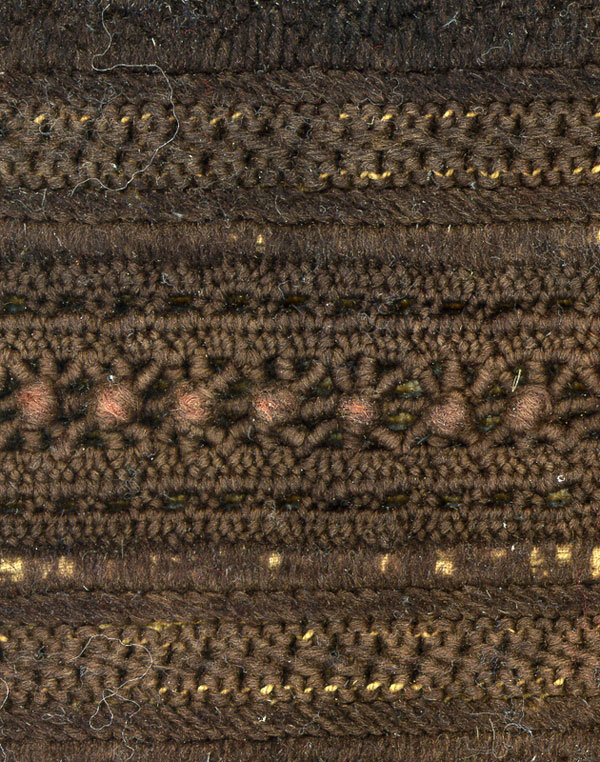
Kalotaszeg – vállfüs 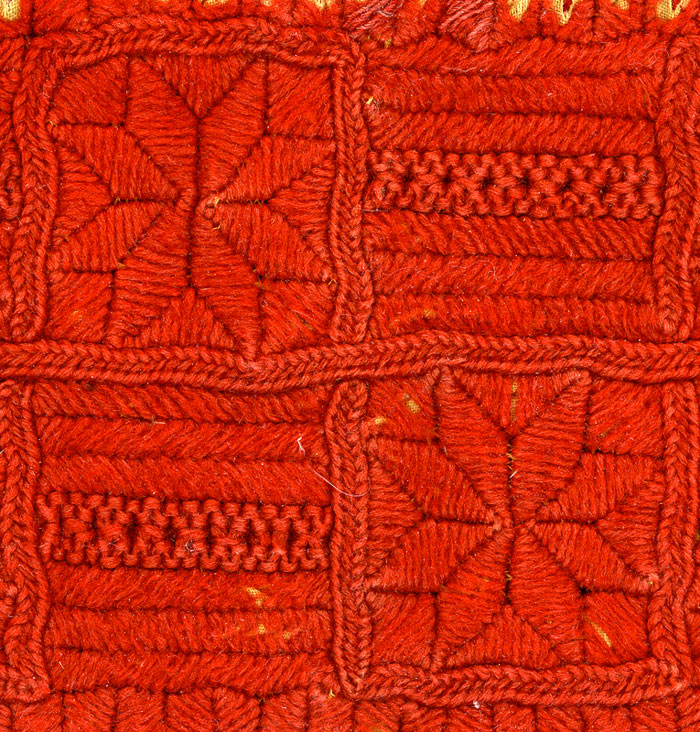
Kalotaszeg – vállfüs részlet 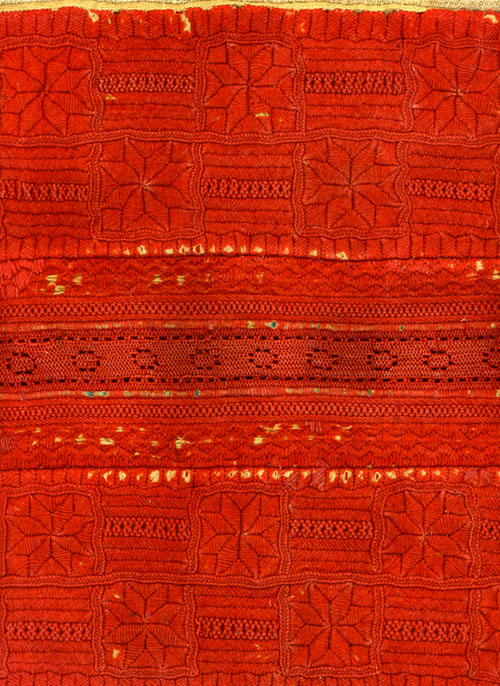
Kalotaszeg – vállfüs 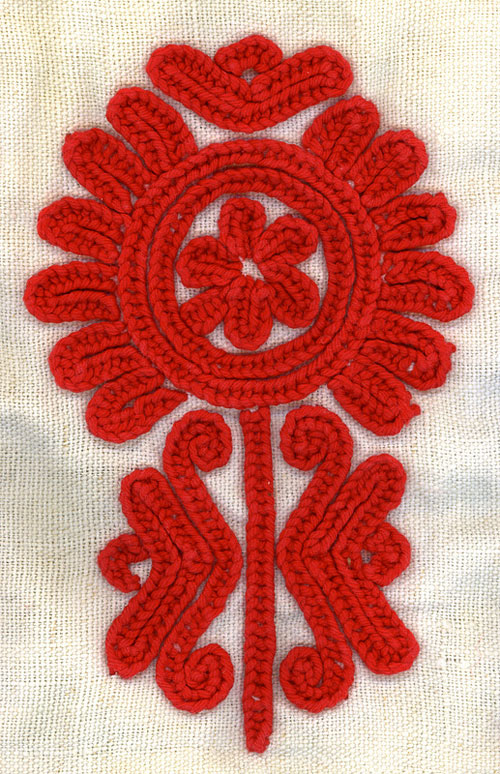
Kalotaszeg kisírásos 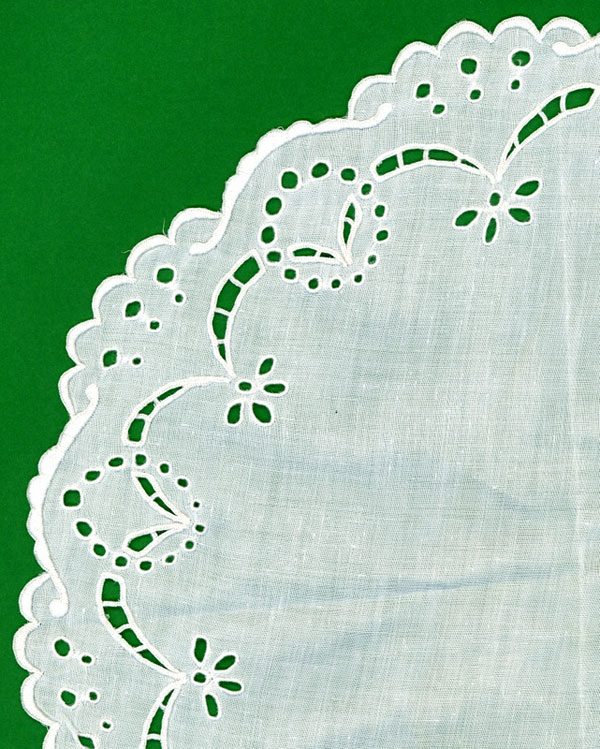
Lyukhímzés – Eyelet Embroidery 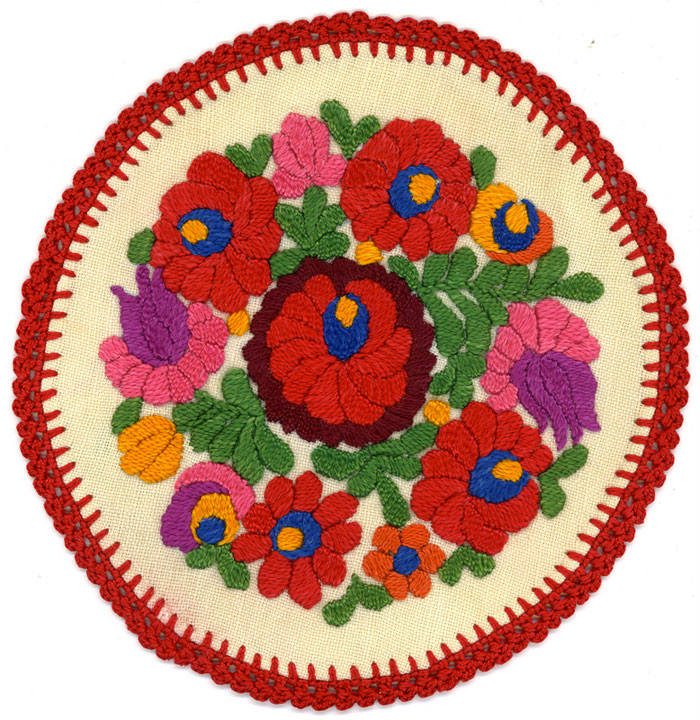
Matyó Mezökövesd 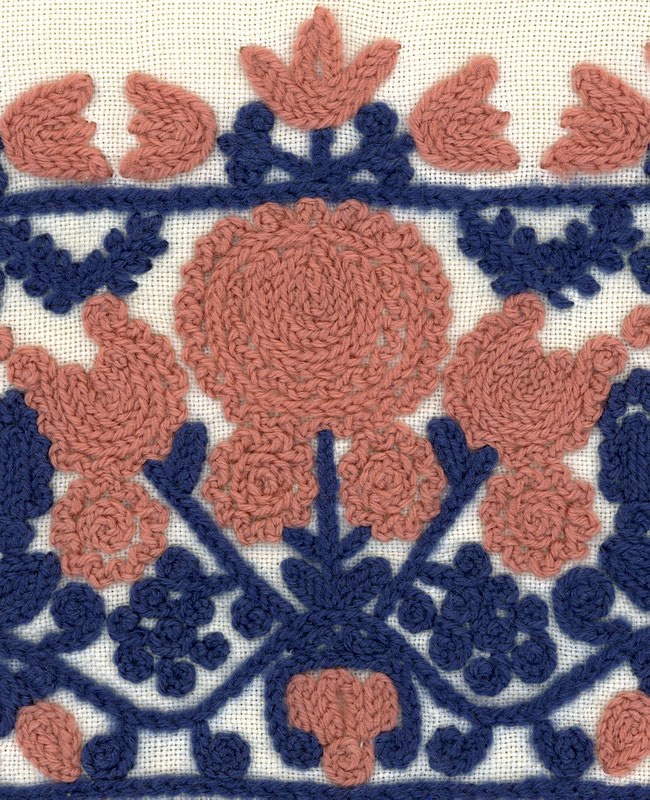
Mezöség 
Mezöség 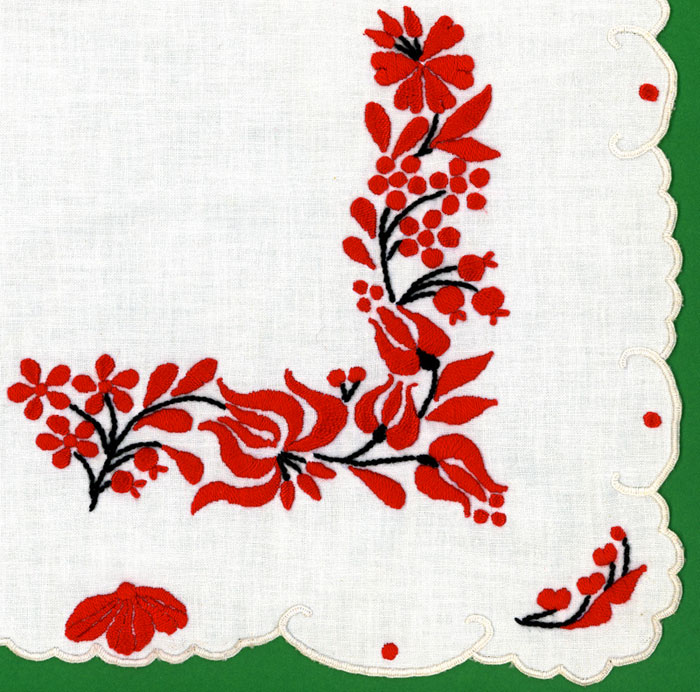
Ókalocsa – Old Kalocsa 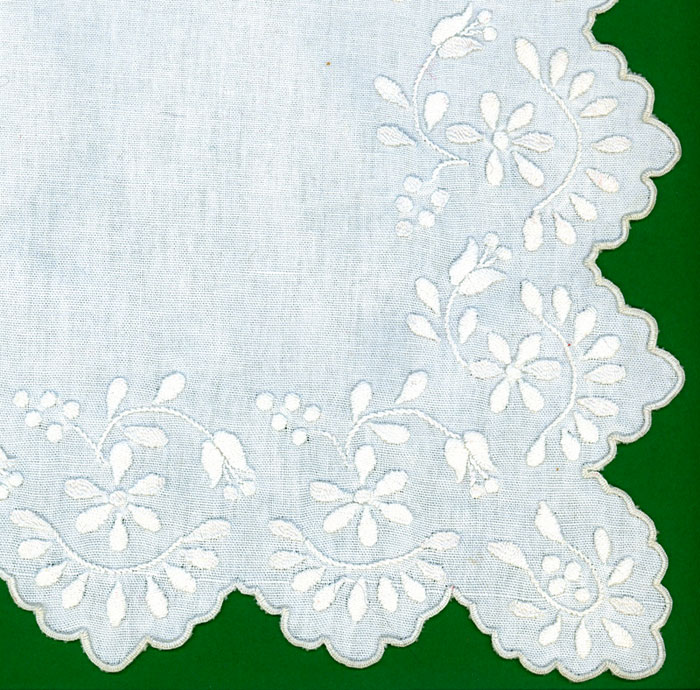
Ókalocsai – Old Kalocsa 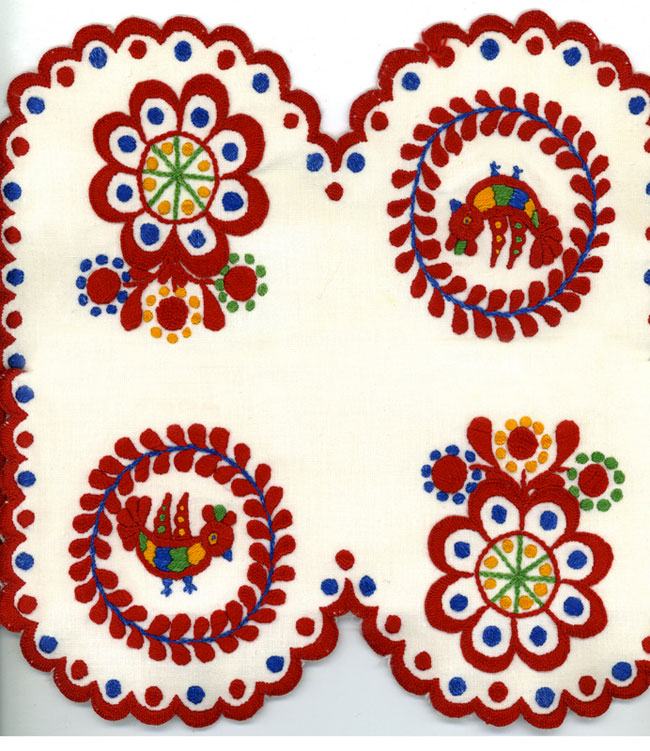
Régi – Old Matyó 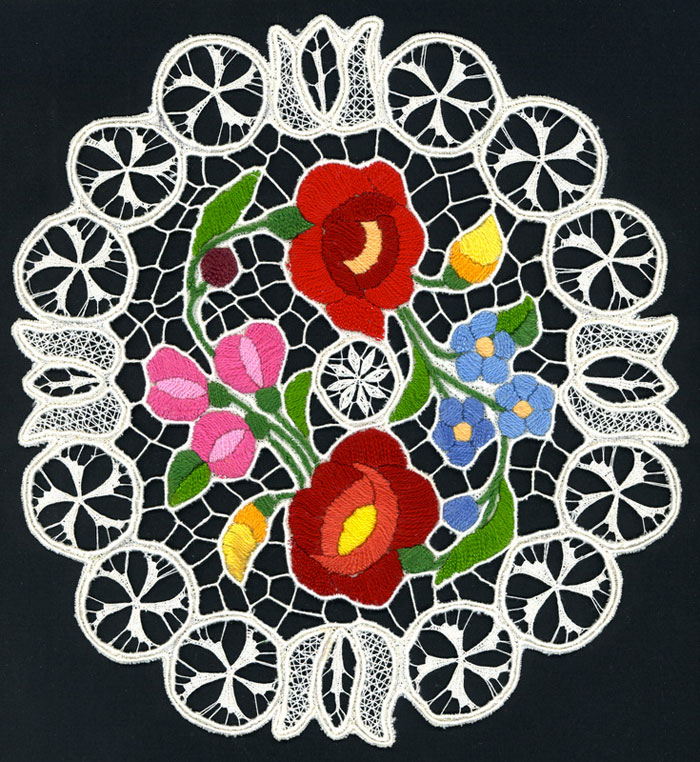
Riseliö – Kalocsa 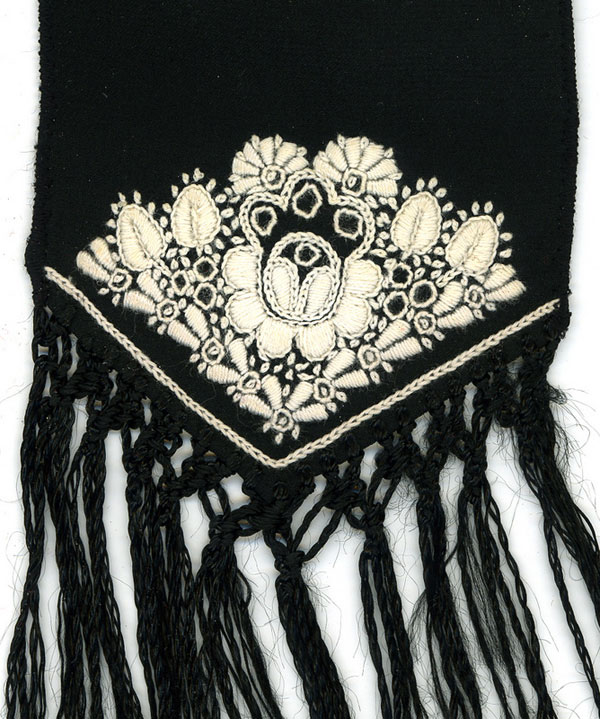
Sárközi fokötö hímzés – Sárköz Bonnet embroidery 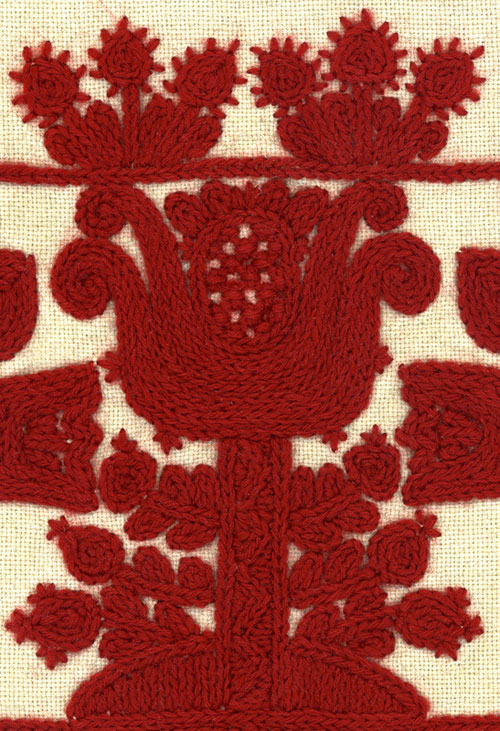
Szék – Erdély – Transylvania 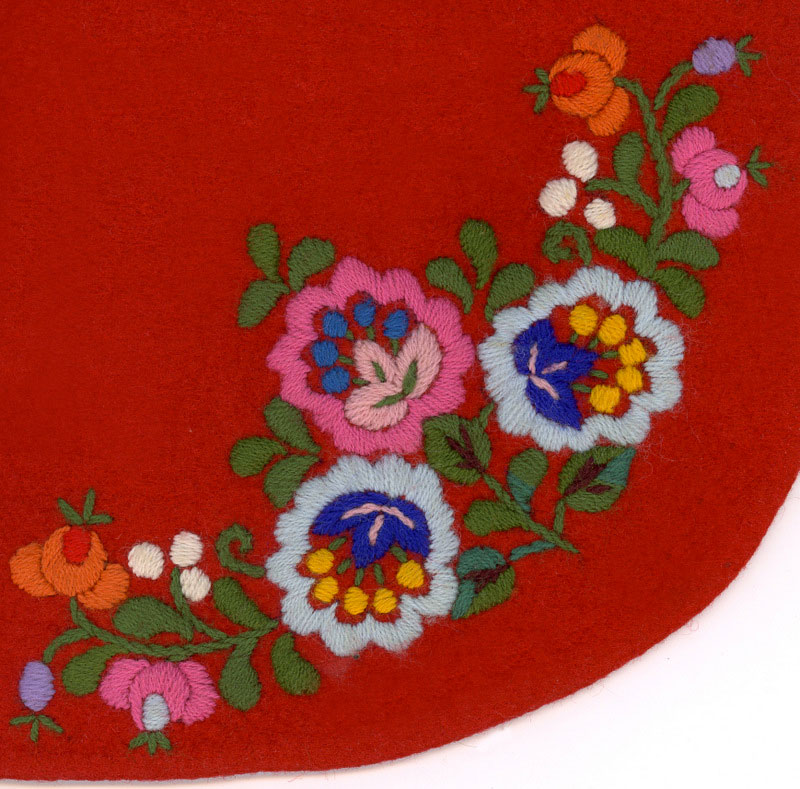
Szentistváni mellény 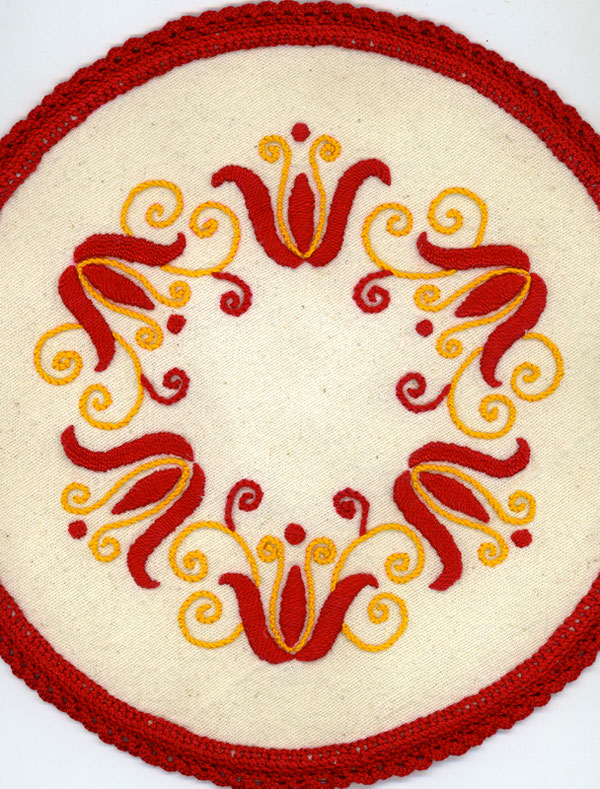
Úrihímzés – Noble ladies embroidery
